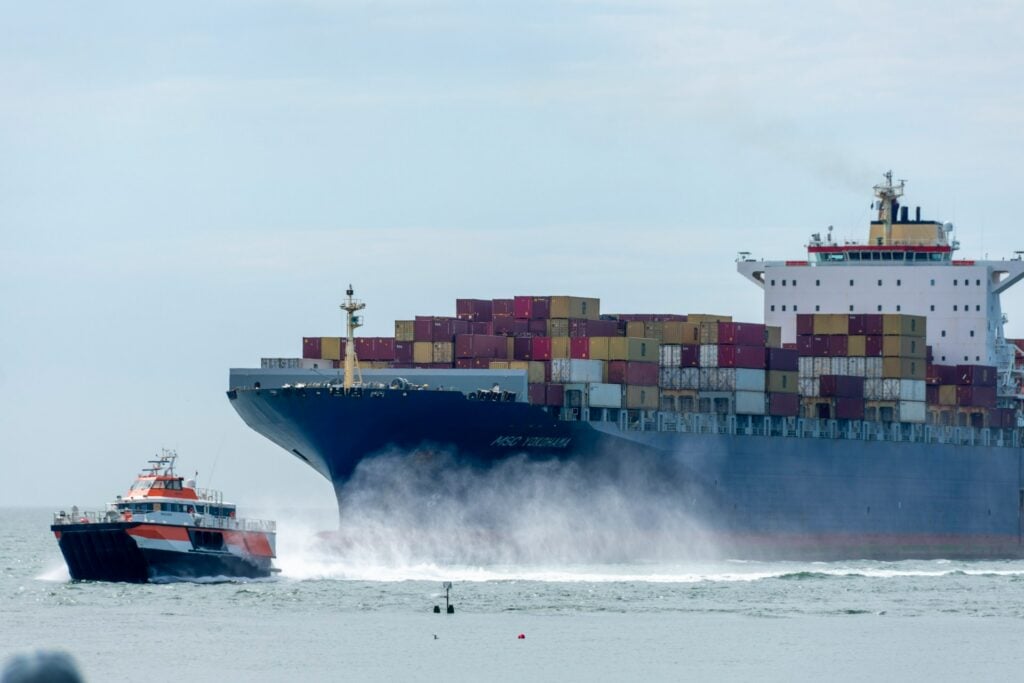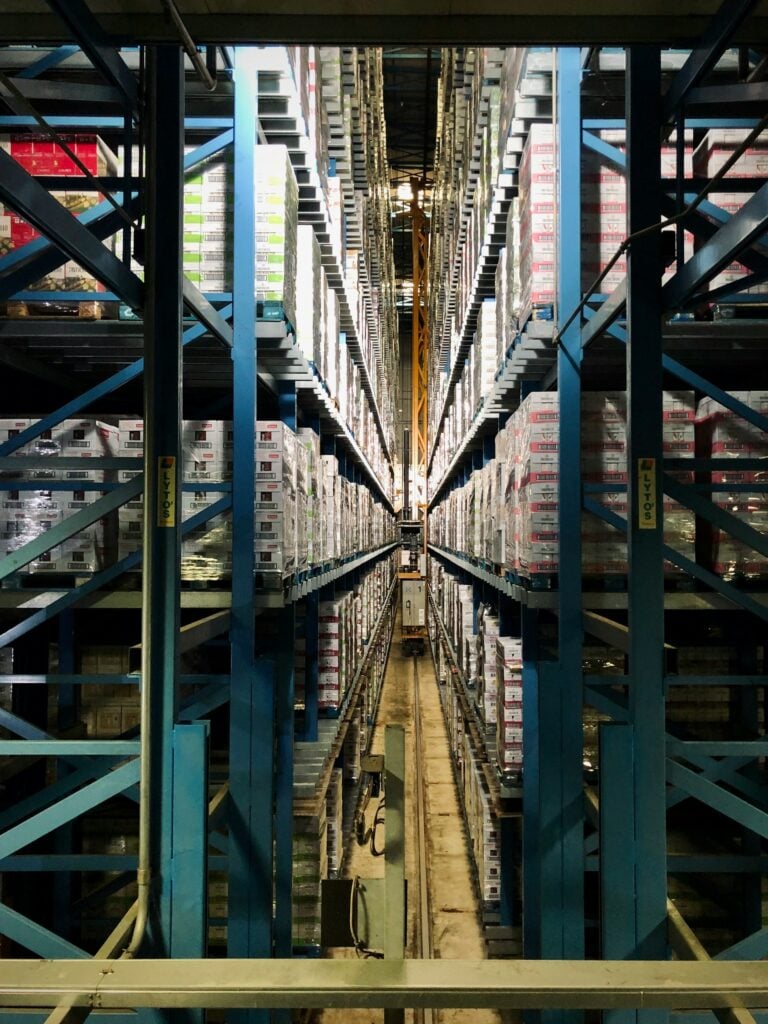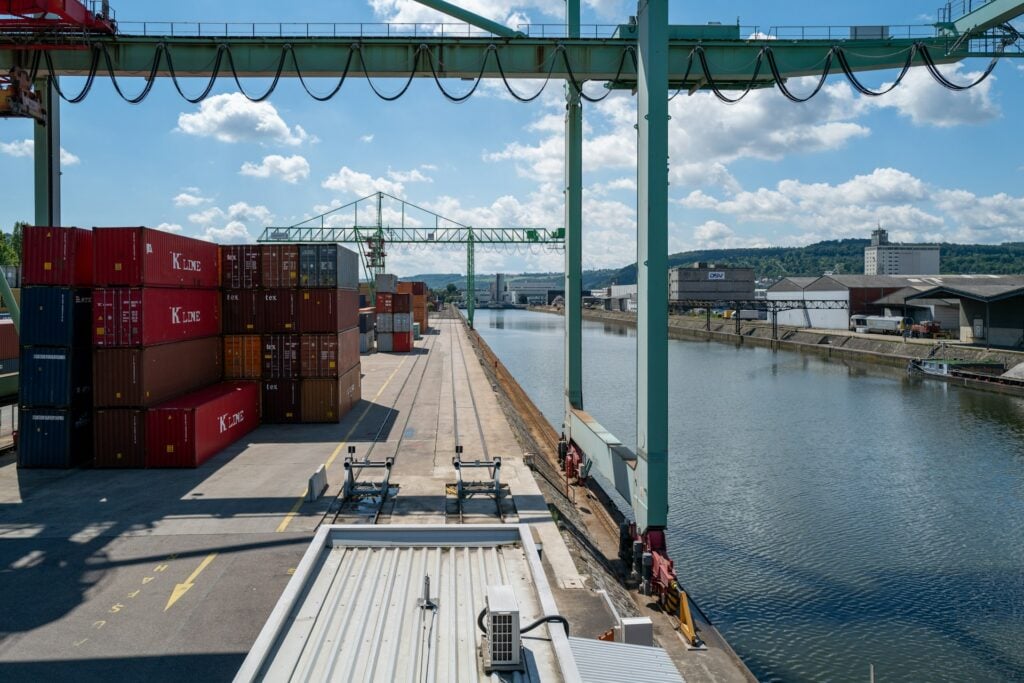New technology brings new possibilities, and there is no shortage of articles praising the benefits that blockchain will bring to the maritime logistics industry. The claims are that using Blockchain, processes can be executed more securely and faster than with the current paper and electronic interfacing approaches. Is this really so? Let’s take the example of the Bill of Lading document and ” put it on the Blockchain.”
The Bill of Lading
The Bill of Lading (B/L) plays a vital role in international commerce, with its usage traceable to the 14th century[1]. There exists no formal definition of a B/L in existing legislation up to now[2]: the B/L is a receipt, evidence of the contract of carriage, a contract of carriage and a document of title, depending on whether the holder of the B/L is the shipper, consignee or endorsee.
Consider the example outlined in Figure 1, the shipper hands over the goods for shipment to the carrier. The carrier, or its agent, will issue a B/L stating the goods shipped.
In the hands of the consignee however, possession of the B/L is regarded as good as possessing the goods. This means that the shipper by transferring the B/L to the consignee, symbolically delivers the goods. As it is a document of title, the carrier will only issue the shipped goods to the owner of an original B/L.
Introducing Digitization
The digitization of the B/L is not new, with several high-profile projects[3]. Yet adoption is still far from mainstream, despite the possible benefits promised by a paperless trade. A central objection raised to these “single-window” systems concerns the central governing body of the system:
The system [SEADOCS] did not take off, since the participants were worried about the confidentiality of the information they divulged to the [all-controlling] bank” [4]
“Negative aspects of Bolero are the closure of the system and the lack of confidentiality of the messages exchanged between users (…)” [5]
Source: [6]
The need for data sharing across multiple untrusted partners, without a central governing body sounds like the perfect case for a blockchain project. Right?
Three barriers to implementation
In my research, I have identified three barriers to a blockchain-based application in maritime logistics. In practice, these barriers prove the unfitness of blockchain as a solver for current problems in the industry.
Political barriers
From a holistic point of view on the supply chain, sharing all data across all partners could enable global optimization. This is confirmed by multiple initiatives, platforms and pledges to share more data[7]. However, the data sharing is not necessarily interesting from the viewpoint of individual actors. So instead, actors are hesitant to share data to other links in the chain, as the value created by investing in sharing data might be captured by other parties (free-riding) and even competitors.
Blockchain implementations today do not provide the right tools to control access rights and ensure privacy about transactions.
Technical barriers
One of the critiques of Bitcoin, is that it “doesn’t scale” very well, as all data is stored on each node. As a simple calculation will show that also in our example, this argument is a valid objection. Accounting for only the 4 million containers Maersk moved between Asia and Europe[8], it is reasonable[9] to assume 40GB would be required to store this amount. Considering that global container traffic was estimated at 680 million in 2014[10], the annual storage requirements would soon raise capacity problems.
Legal barriers
It is without doubt that the transfer of legal documents is subject to strict regulations. The B/L is no different in this, regulated by multiple frameworks. I have enlisted several established regulatory frameworks and laws, in this respect.
| Law/regulation/framework | Relevant? |
| UNCITRAL Model Law on Electronic Commerce (also “EC Model Law”) | YES, electronic information exchange |
| EU directive on e-commerce | YES, electronic contracts and information service providers |
| UNCITRAL Model Law on Electronic Signatures | YES, signature of electronic messages |
| EU directive on a community framework for electronic signatures | YES, signature of electronic messages |
| Rotterdam Rules | YES, recognition of negotiable and non-negotiable transport records (Carr, 2013, p. 469) |
| ICC UCP | YES, relevant to Letters of Credit |
| Carriage of Goods by Sea Act 1992 | NO, but includes support for electronic documents |
| Hague-Visby Rules | NO, different scope |
| Hamburg Rules | NO, different scope |
| INCOTERMS® | NO, but includes support for electronic documents |
| United Nations Convention on the Use of Electronic Communications in International Contracts | NO, transferable documents (such as B/L) excluded |
Without a rigorous analysis of these legal frameworks in respect to this new technology, mainstream adoption of a Blockchain solution is unlikely.
Conclusion
The above barriers show that blockchain is currently too immature and unfit for general use in the maritime logistics context. However, we must be careful to distinguish the current barriers from the possibilities created by the maturing of the technology and re-evaluate often.
To further mature and develop the technology in this specific sector, I propose Capsule as an open-source experiment. It is a transaction governing technology for the use in global industrial context, specialized in transferring trade and logistics data. It uses a combination of DLT (Distributed Ledger Technology, a.k.a. Blockchain) and DHT (Distributed Hash Table) to enable proof-of-existence of transactions with a tamper-proof timestamp. By doing this, it already incorporates a handful of solutions to the barriers specified above.
For more information, feel free to contact me.
Michiel Valee
[email protected]
Conact me on LinkedIn
——————————————————————————–
[1] Bennett, W. P. (1914). The History and Present Position of the Bill of Lading as a Document of Title to Goods: Being the Yorke Prize Essay for the Year 1913: University Press.
[2] Carr, I. (2013). International Trade Law (5th ed.): Routledge.
[3] The FIATA eBOL, BOLERO, SEADOCS, Wave…
[4] Carr, I. (2013). International Trade Law (5th ed.): Routledge.
[5] Pagnoni, A., & Visconti, A. (2010). Secure electronic bills of lading: blind counts and digital signatures. Electronic Commerce Research, 10(3/4), 363-388. doi:10.1007/s10660-010-9060-2
[6] UNECE. (2017). Single Window for Trade. Retrieved from http://tfig.unece.org/contents/single-window-for-trade.htm
[7] NxtPort. (2017). NxtPort. Retrieved from http://nxtport.eu
[8] https://www.maersk.com/about/facts-and-figures
[9] 10kb per B/L, 1 B/L per container, no changing of ownership
[10] https://data.worldbank.org/indicator/IS.SHP.GOOD.TU





